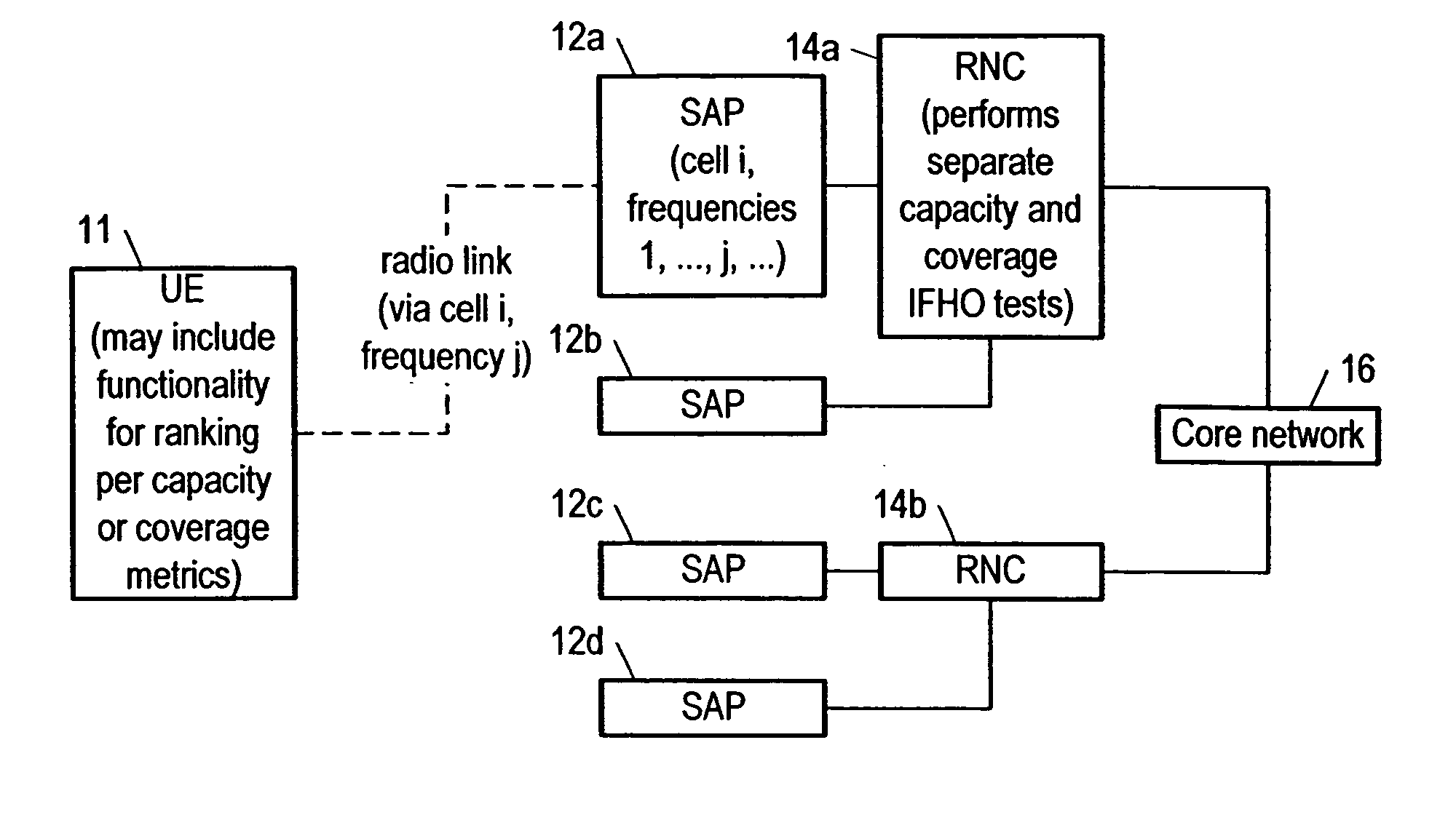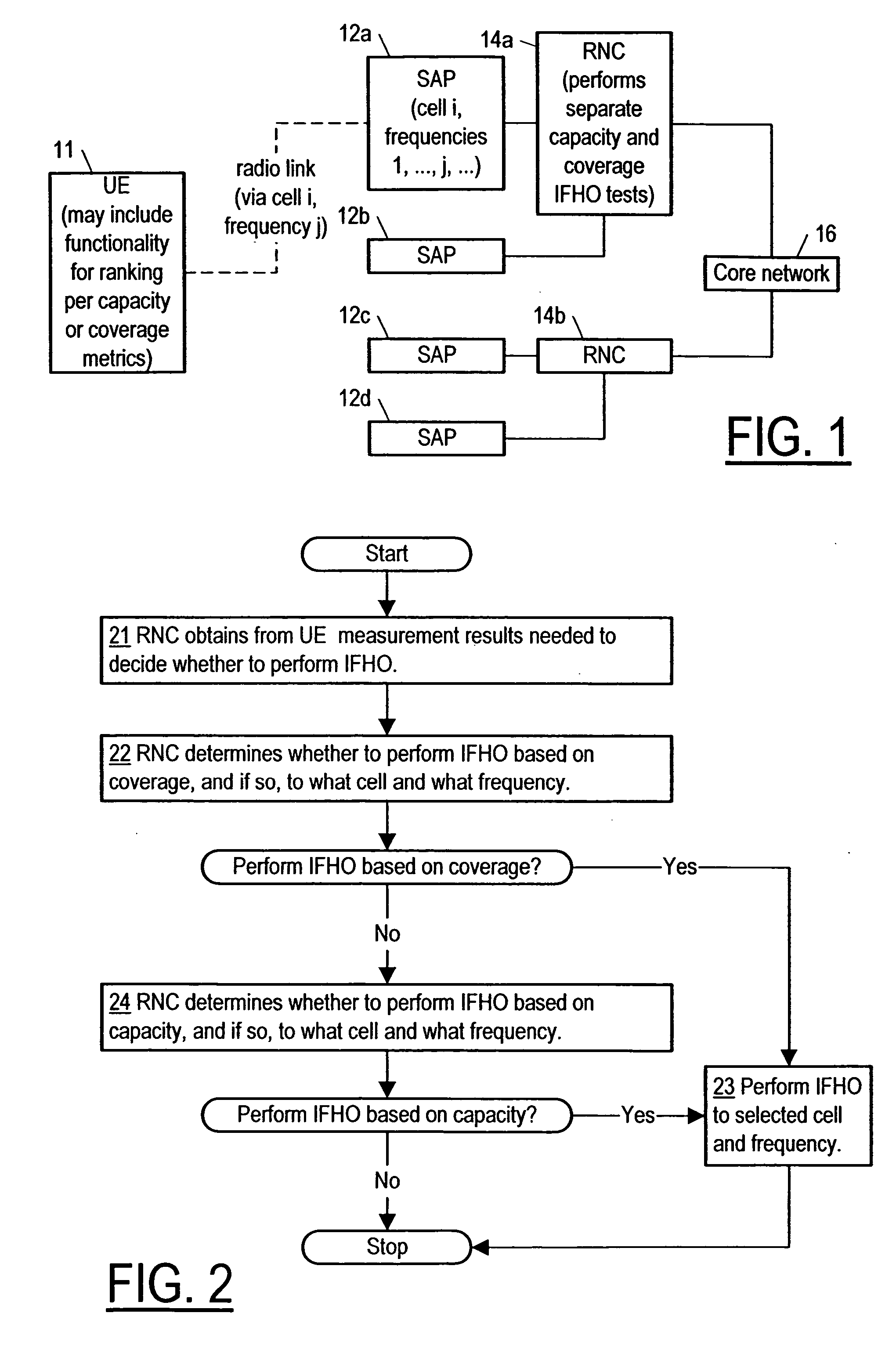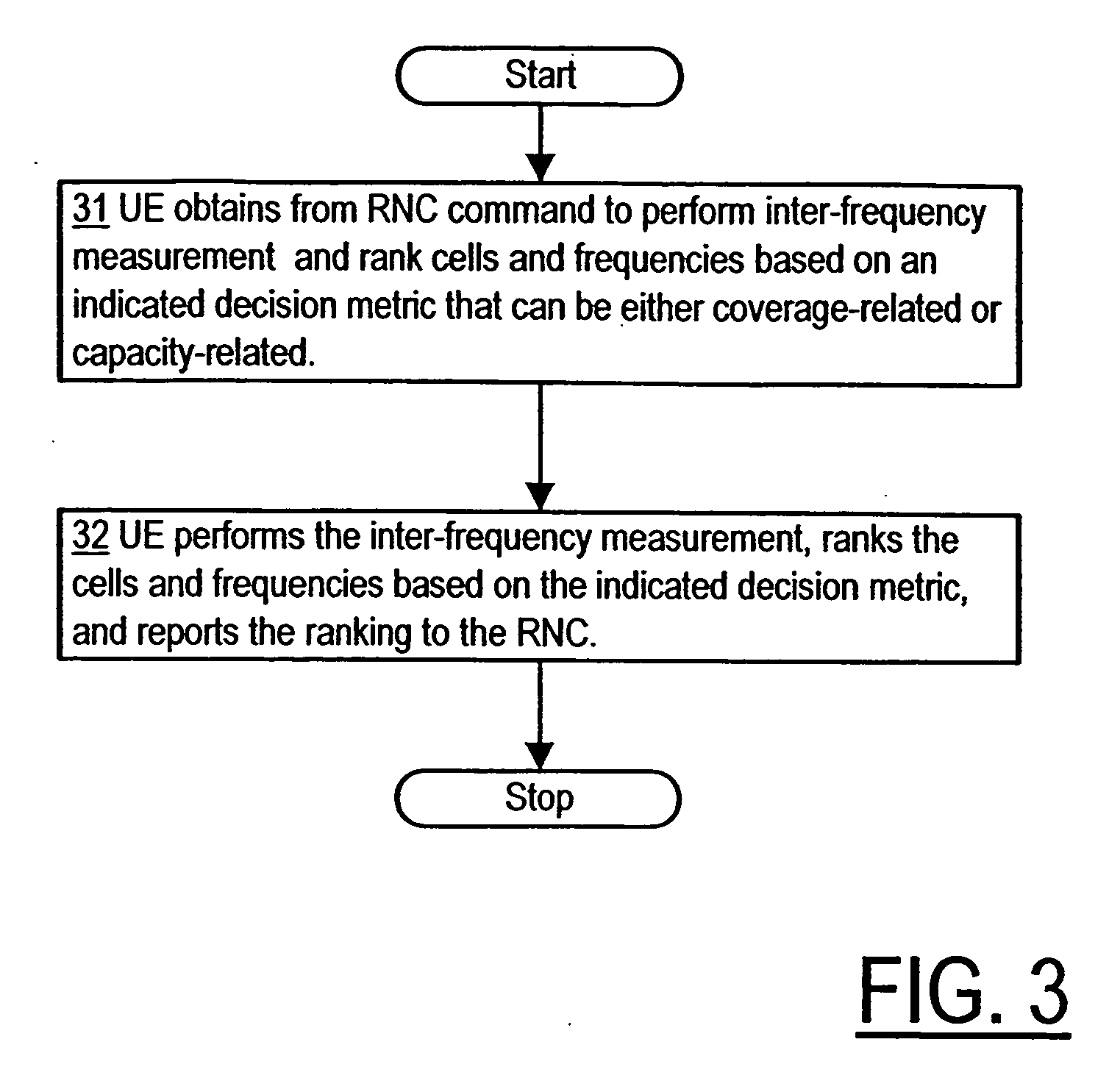Frequency quality criteria for inter-frequency handover in a TD-CDMA communication system
- Summary
- Abstract
- Description
- Claims
- Application Information
AI Technical Summary
Benefits of technology
Problems solved by technology
Method used
Image
Examples
Embodiment Construction
[0023] According to the invention, the IFHO algorithm for TD-SCDMA is modified so as to include a frequency criteria or metric for two different causes of IFHO: one for coverage-caused link deterioration (i.e. for the case that a UE moves outside of the coverage area of a SAP) and the other for over-capacity. For coverage-caused IFHO, the IFHO metric can be the same as in the prior art, namely:
M(IFHO-coverage)=PRSC, (1)
where PRSC is P-CCPCH RSCP (for a particular cell i, not made express in the above, and for a particular frequency j, also not made express), i.e. the received signal code power for P-CCPCH (for a cell i). For over-capacity, the IFHO metric can be:
M(IFHO-capacity)=PRSC / (IRSS−PRSC), (2)
(again for a particular cell i, not made express, and for a particular frequency j, also not made express) where IRSS=UTRA Carrier RSSI (Received Signal Strength Indicator), which is used here to indicate the wideband power of slot 0. Other metrics for the IFHO capacity metric ...
PUM
 Login to View More
Login to View More Abstract
Description
Claims
Application Information
 Login to View More
Login to View More - R&D
- Intellectual Property
- Life Sciences
- Materials
- Tech Scout
- Unparalleled Data Quality
- Higher Quality Content
- 60% Fewer Hallucinations
Browse by: Latest US Patents, China's latest patents, Technical Efficacy Thesaurus, Application Domain, Technology Topic, Popular Technical Reports.
© 2025 PatSnap. All rights reserved.Legal|Privacy policy|Modern Slavery Act Transparency Statement|Sitemap|About US| Contact US: help@patsnap.com



